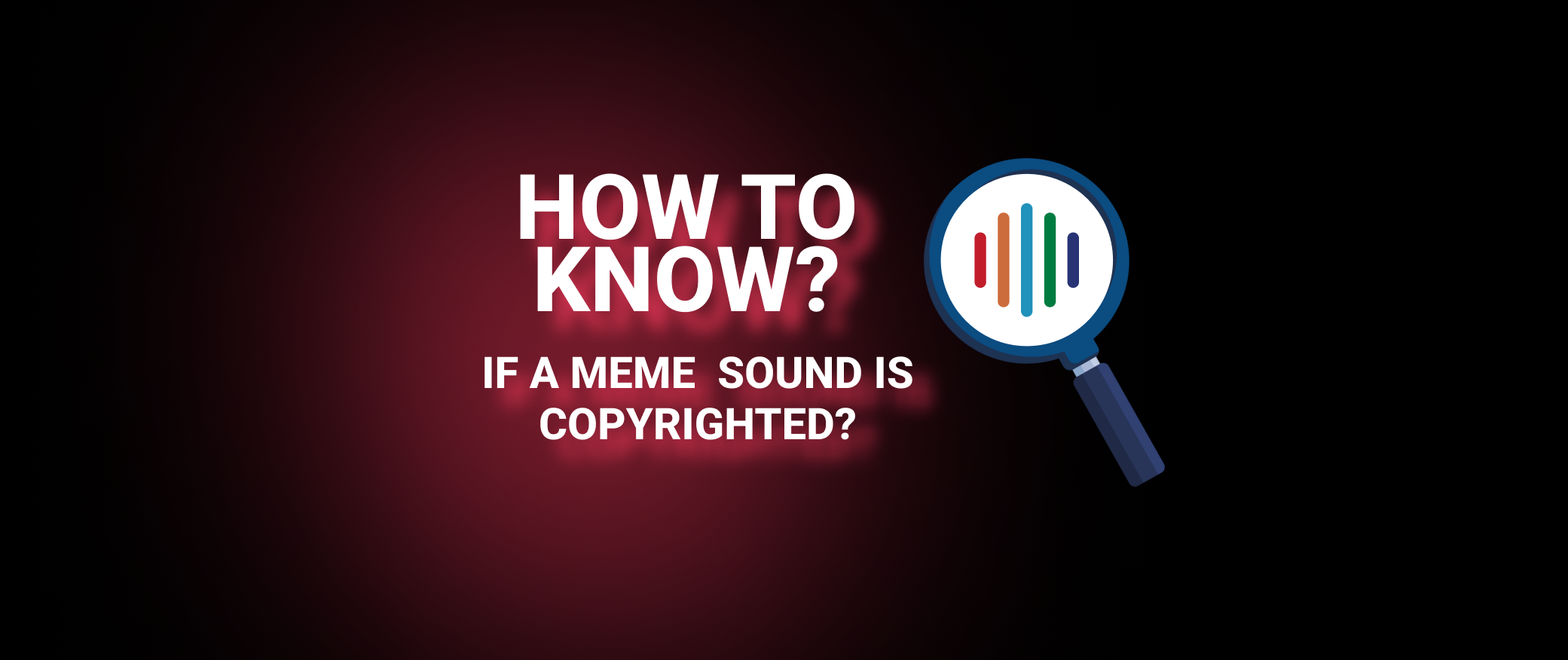Meme sounds can add a fun and engaging touch to your videos, streams, podcasts and other forms of social media posts, but using the wrong one could land you in hot water due to copyright issues. Whether you’re using a viral meme sound or a catchy soundbite from a popular video, it’s essential to understand the copyright status of the audio before you use it in your content.
In this guide, we’ll show you how to know if a meme sound is copyrighted and offer solutions to safely use sounds in your content without facing copyright claims. Voicy Premium, our royalty-free sound catalog, is packed with meme sounds, sound effects, and music that you can use without worrying about copyright claims.
What Is Sound Copyright, and Why Does It Matter?
Sound copyright protects creators’ work, including music, sound effects, and meme sounds, from being used without permission. Using a copyrighted meme sound without authorization can lead to various consequences, like content removal, demonetization, or legal actions. For content creators and influencers, these risks can be costly, both financially and reputationally.
With so many sounds circulating on the internet, especially from memes, it’s crucial to double-check the copyright status of the audio before you include it in your video or post. That way, you’ll avoid takedown notices or worse, losing monetization on platforms like YouTube, Twitch, or TikTok.
How to Know if a Meme Sound Is Copyrighted: 6 Easy Steps
1. Look for a Copyright Notice
The easiest way to find out if a sound is copyrighted is to check for the © symbol. This could be displayed on the platform where the sound was uploaded or in the description. If you see a copyright symbol, the sound is likely protected, and you’ll need permission to use it.
2. Check the Platform’s Policies
Platforms like YouTube, TikTok, and even sound-sharing sites often specify whether audio clips are copyrighted. Some platforms have tools to help you identify copyright-protected content before you upload it. For example, YouTube’s Content ID system could alert you if a meme sound in your video is copyrighted. However, it’s important to note that YouTube’s Content ID system isn’t a foolproof guarantee that a sound is not copyrighted. There may be instances where copyright owners haven’t yet submitted their content to the system, or they could later decide to enforce their rights more strictly. As a result, you could still be vulnerable to copyright claims in the future, even if your video initially passes the check.
3. Search the Source
If the meme sound originates from a video, TV show, or movie, there’s a good chance it’s copyrighted. You can also visit the creator’s or production company’s website to find out whether the sound is protected.
4. Use Online Sound Identification Tools
Tools like Shazam or SoundHound can help identify where a meme sound came from and provide details about its origin. Once you know the creator or source, you can look for any copyright information related to the sound.
5. Check Online Databases
Music databases like BMI Songview and SESAC Repertory are good places to check if a sound clip is copyrighted. While these platforms mainly focus on music, you may still find popular meme sounds listed.
6. Use Voicy Premium’s Royalty-Free Meme Sounds
To skip the hassle, turn to Voicy Premium, where you can find a wide range of royalty-free meme sounds, sound effects, and even music. These sounds are pre-cleared, so you can use them in your content without worrying about copyright claims. Whether you’re looking for viral sound effects or original music, Voicy Premium has you covered.
Handy Tools to Check if a Meme Sound Is Copyrighted
If you want to go the extra mile to ensure a sound is copyright-free, there are tools available that can help:
• Shazam & SoundHound: These apps are typically used for identifying music, but they can also help identify popular meme sounds and let you know where they came from.
• YouTube Studio’s Copyright Checker: If you’re uploading content to YouTube, the platform will automatically check for any copyrighted sounds in your video. This feature can save you from unintentional copyright strikes.
• Voicy Premium: Our platform offers a vast catalog of royalty free meme sounds, sound effects, and music that you can use freely. With Voicy, you don’t have to worry about spending hours checking for copyright information — all sounds in Voicy Premium are royalty-free.
Safely Using Sounds in Your Content
The best way to avoid copyright issues is to use royalty-free sounds. Voicy Premium offers meme sounds and music that are specifically licensed for creators. With a subscription you can integrate meme sounds and other audio elements into your content without worrying about takedown requests, demonetization, or copyright strikes.
In addition to meme sounds, Voicy Premium provides royalty-free sound effects and music to enhance your videos, podcasts, streams, or social media posts. With Voicy’s extensive sound catalog, you can focus on creating without fear of copyright infringements.
Key Takeaways
• Always Check for Copyright Notices: Look for © symbols and verify if the meme sound you’re using is copyrighted.
• Use Identification Tools: Apps like Shazam and platforms like YouTube Studio’s Content ID can help identify if a sound is protected by copyright.
• Rely on Royalty-Free Platforms: Voicy Premium is your go-to source for royalty-free meme sounds, sound effects, and music, all pre-cleared for safe use in your content. Start a free trial now.
By taking these steps and using trusted royalty-free platforms like Voicy Premium, you can ensure that your meme sounds are copyright-free, letting you create without creative boundaries.
More Articles Related to Copyright
• How to avoid Copyright Strikes on YouTube
• All you need to know about the YouTube Audio Library

